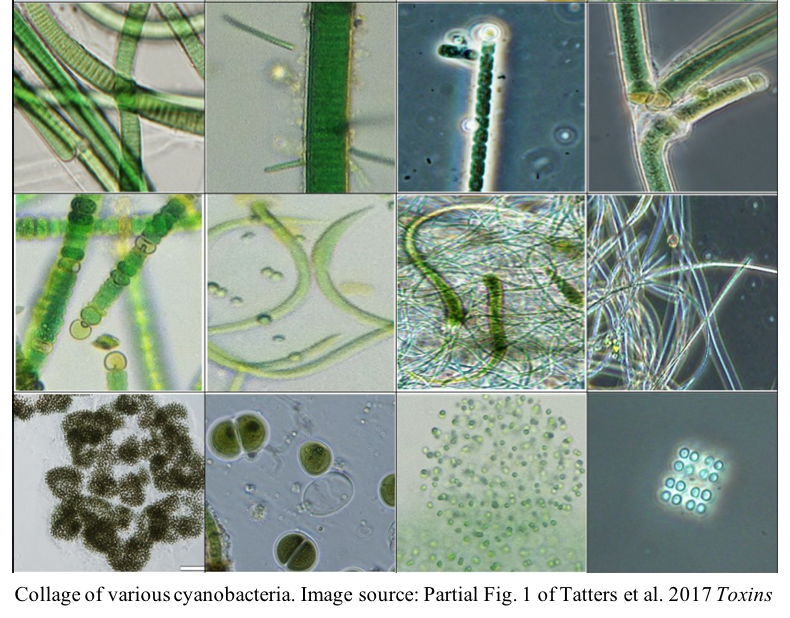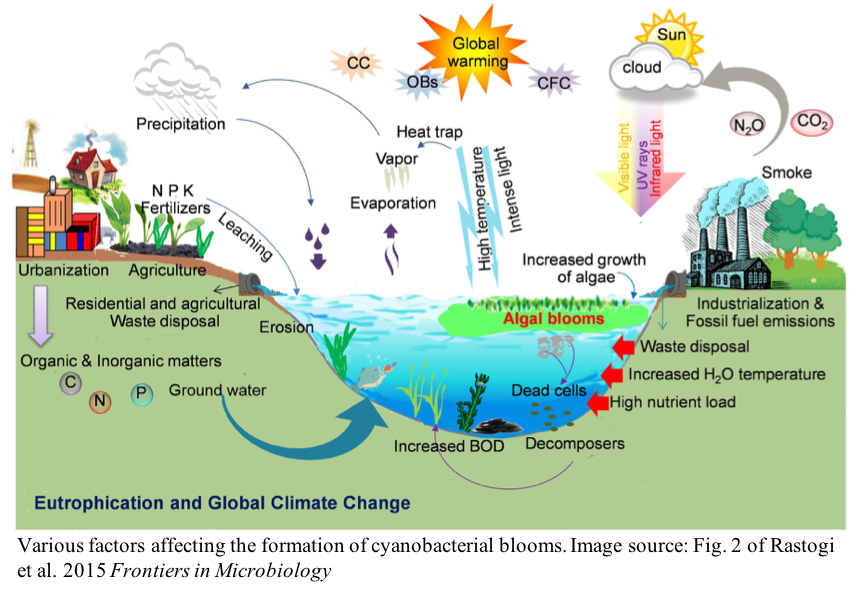Cyanobacteria harmful blooms
There is an increase in the occurrence of harmful blooms of cyanobacteria in recent years. These blooms are often toxic and are a serious threat to the ecosystem balance, as well as the health and economy of the human society. We monitored the presence of cyanobacteria in various fresh water bodies around California and provide a guide to the identification of cyanobacteria
What are cyanobacteria?
Cyanobacteria, also known as blue-green algae, are a group of photosynthetic bacteria. There are unicellular, filamentous, and colonial species. A number of them can perform nitrogen fixation, which converts atmospheric nitrogen into a bioavailable form like ammonia.

Causes of cyanobacterial blooms
The rapid increase of the abundance of a group of cyanobacteria and its subsequent domination of an ecosystem (a
bloom event) can be caused by many factors. Physico-chemical factors that affect the formation and persistence of blooms include:
- light availability
- temperature
- hydrology
- nutrient

Human activities that increases nutrient loadings in water bodies, e.g. sewage discharge or fertilizer runoffs, are potential factors that promote the growth of cyanobacteria.
Changes in climate can also favor the growth of cyanobacteria. Cyanobacteria growth rates are higher in warmer temperature, and changes in rainfall patterns can affects the hydrology and nutrient delivery into water bodies.
To find out more about cyanobacteria:
- Tatters, A.O., M.D.A. Howard, C. Nagoda, L. Busse, A.G. Gellene, D.A. Caron. 2017. Multiple stressors at the land-sea interface: Cyanotoxins at the land-sea interface in the Southern California Bight. Toxins. 9: 95.
- Rastogi, R.P., M. Datta, A. Incharoensakdi. 2015. Bloom dynamics of cyanobacteria and their toxins: Environmental health impacts and mitigation strategies. Frontiers in Microbiology 6:1254.
- Paerl, H.W., V.J. Paul. 2012. Climate change: Links to global expansion of harmful cyanobacteria. Water Research 46: 1349-1363.
